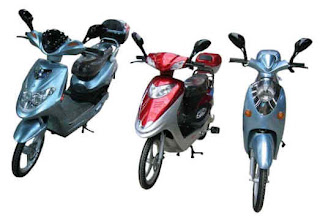When Business 2.0 published this list of 11 disruptors, or companies that, "will change everything", one company clearly stood out in that list, for if it could indeed deliver what was being claimed it would become the biggest disruptor of them all. Here was a product which could kill companies, industries and potentially entire economies - that was the scale of its disruptive potential. That company was EEStor, and the product, a battery.
The Promise
The buzz was that EEStor, Inc, a secretive Texas-based company, could deliver a battery based on ultra-capacitor technology that in out-performing any battery that existed today would present electricity storage solutions that would in one stroke make a variety of alternate energy solutions suddenly very viable - an ultra efficient and long-lasting battery would make wind and solar power plants very viable, as the vagaries of production would be ironed out - even at the level of individual homes. You would see electric cars able to compete with IC-engine cars favorably in terms of range and recharge times. We would at once see a big churn in two of the biggest industries of our time - oil and automobiles. The possibilities of course are endless.
So what exactly is the claim? Sample this, "EEStor’s products, to be known as Electrical Energy Storage Units [EESU], will start coming off a production line this year. The first EESU will be a 45 kg unit that gives a car a 350 km range and can be recharged in under ten minutes. In comparison with petrofuels, a EESU cars’s running cost will be 80% cheaper." And this, "The company boldly claims that its system, a kind of battery-ultracapacitor hybrid based on barium-titanate powders, will dramatically outperform the best lithium-ion batteries on the market in terms of energy density, price, charge time, and safety. Pound for pound, it will also pack 10 times the punch of lead-acid batteries at half the cost and without the need for toxic materials or chemicals, according to the company."
The Technology
Though capacitor-based batteries are not new, they have never been able to hold as much energy as electrochemical batteries of the same size. They would also discharge rather quickly, unable to hold the charge for long. On the plus side, they can store and release most of the energy with minimum losses, which means they are very efficient. They can also be charged very quickly. While this has ensured that they have their set of unique applications, they could never be used, say, to power electric cars.
The Skeptics
Because EEStor is so secretive, most of the latest news on the product has either come via the patent office, or the electric car company which currently has an exclusive deal to use their batteries. And because the company is quiet, there are a lot of unanswered questions out there. Do check out the comments section of this article for instance. Skeptics include a VP from Maxwell Technologies, which has been making ultra-capacitor batteries for a while now, though nothing close to the specs needed to compete with lead acid or lithium ion batteries. On its part, EEStor claims that releasing information would result in giving away a competitive advantage.
The Supporters
On the one hand we have ZENN a Toronto-based electric car-maker, who are planning to release a car based on the EEStor battery as early as this year. That is a vote of confidence from the consumer community. On the other hand we have hotshot venture capitalists Kleiner Perkins Caufield & Byers, who had invested in EEStor back in 2005. Kleiner has a well-known early investment track record in companies like Google and Amazon.
Finally it makes sense to respect the bite of a dog that does not bark much.












